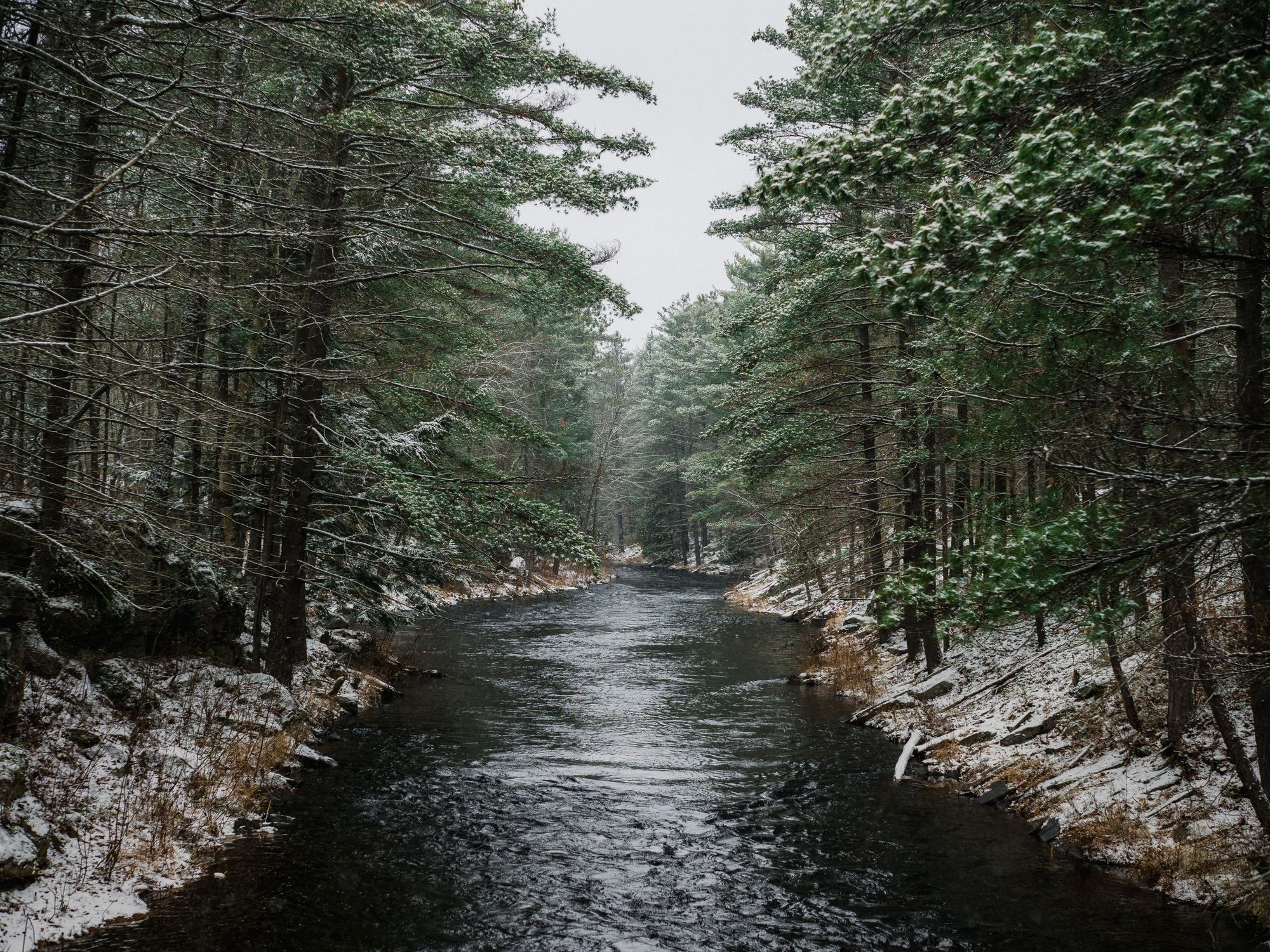Olympus E-M1 Mark II
A long-term review of Olympus' flagship camera.

What would it take to convince you?
I started asking myself that several months into owning and shooting with the E-M1 Mark II. What would it take to convince me that this smaller-sensor flagship could handle not just my travel and personal shooting, but the full load of professional work as well?
I asked myself while I had a review unit shortly after the camera’s release. I asked myself when I subsequently bought my own copy. I asked myself when I took it out on its first job. I asked myself when I stopped taking my X-Pro 2 to work shoots, then to personal shoots. I asked myself when deciding which camera to trust with my once-in-a-lifetime trip to Africa.
I trusted the E-M1 Mark II as my camera on that trip, and near the end of last year, I licensed a photo to Apple; it was shot on my E-M1 Mark II.
I had my answer.

The Grass is Always Greener
I’m a geek, but worse than that: I’m a geek with access. Being a reviewer has its perks, but peace of mind isn’t one of them.
Having the opportunity to play with the latest and greatest stokes the flames of doubt and inadequacy. It makes you second guess every gear decision, seeing it in a broader context against the landscape of other things you’ve tried.

Take it from someone who’s shot with the best available stuff, from 1”-sensor compacts to medium format systems: there’s always a higher tier to chase. More resolution, more dynamic range, just plain more.
Contemporary photographic culture is steeped in consumerism, a toxic, slippery slope I have fallen down too often myself. I’m opting out of that rat race this year, in an effort to double down on the stuff that will actually improve my output: technique, light, and practise.

Not Another Review
Build quality, ergonomics, the requisite here’s-that-spec-sheet-again section…sigh. The world doesn’t really need another “real world” review of a camera, and this isn’t going to be much of one.
Besides, trying to cover everything the E-M1 Mark II does is just daunting—that’s partly why it’s taken me so long to put words down about it to begin with. Especially in light of today’s firmware updates.
I started taking notes for this piece nearly a year ago. Everything from small observations, to requests, to complaints, to compliments have been accumulating ever since.
Over time, I’ll be sharing shorter, more specific pieces about how I have my camera set up, my choice in lenses, and how my PEN-F fits into the equation, and more.
For now, rather than barfing 5,000 words at you, I want to distill things down to the essentials, with a hat tip to Matthew Robertson for the inspiration.

What You Need to Know About the E-M1 Mark II
- The grip is probably my favourite of any mirrorless camera I’ve tried so far; fits securely in my hands and stays comfortable even with longer lenses and extended shooting times
- After a lot of shooting in parallel, I’ve come to the conclusion that a touch AF pad is faster than a focus joystick; the latter feels more direct, but it moves the focus indicator at a fixed pace, whereas a touch AF pad tracks your finger at whatever speed you move it, allowing for quicker reactions
- The extremely high burst rate (“like a fluttering moth trapped in the camera”, as David Kilpatrick put it) is useful for action, but also for getting really clean exposure brackets with minimal shot-to-shot motion for better HDR composites

- ProCapture is a brilliant feature that I almost never use
- The E-M1 Mark II may have only 1 UHS-II slot, but it’s an incredibly fast one, with higher average write speeds than the Fujifilm X-Pro 2, Panasonic GH5, Sony a9…
- Detail and pixel-level acutance is stupendous, especially with the Olympus PRO lenses
- The consistency of AF performance with M43 lenses is an under-appreciated advantage of the ecosystem; you can expect incredibly accurate, confident AF with almost any compatible lens

- I wish the power switch was accessible on the right side of the body so I could pull the camera up to my eye and flip it on in one motion like I could with my Fujis
- While I can assign the function lever to toggle power, I prefer to keep that assigned to switch the dials between Aperture/Exposure Compensation on the first position and ISO/White Balance on the second
- Weather sealing is nothing short of remarkable on this camera…I’ve put it through some truly frightening adverse conditions—hot and dusty, wet and cold, humid, rainy—and have yet to encounter any signs of trouble

- The built-in pre-amp is really terrible; if you don’t have a mic that allows you to switch on a high-gain mode (like the Røde VideoMic Pro+) so you can keep your levels at a minimum in-camera, you may as well not bother
- The EVF is…boring? It’s larger than the X-Pro 2’s, but grainier and less vivid, making for a fairly uninspiring (but accurate) assessment of your image while you shoot

- It bothers me that my PEN-F has more custom modes on the dial than the E-M1 Mark II does
- Custom Modes, by the way, are much better for quick context switching than Fujifilm’s one-dial-per-function ethos—I can go from pinpoint S-AF single frame mechanical shutter with eye detection, to C-AF 5-point grid burst shooting with electronic shutter with one dial turn
- The dials and buttons themselves are large, well-spaced, and easy to manipulate while wearing gloves, which is a must for shooting here in Canada

- I really wish they’d put a GPS module in so I don’t have to involve my phone in the geotagging process
- The new, larger battery is a tremendous improvement—I routinely approach 800 shots per battery, and recharging is quick
- While the menu system is dense, it means you can customize the camera to work exactly the way you want it to—a process you only really need to undertake once, so it’s not worth complaining about
- I like that you can set the default answer for prompts to be “Yes” instead of “No”, allowing for much quicker card formatting and image deletion
- High Res mode is great for more resolution (with liberal sharpening), but a less-discussed advantage is better colour accuracy and dynamic range that edges out the Sony a7RIII and Nikon D850 for parts of the ISO range where they overlap
- Dynamic range in general is more than sufficient for my shooting, and the easy bracketing makes it possible to tackle even the most challenging lighting

- Many people have complained about the firmware update process being handled via a desktop app, but I actually like this approach since it automatically saves and restores all my settings when performing an update
- When processing E-M1 Mark II files, I find I have more leeway to rescue blown highlights as compared to my X-Pro 2 files
- Conversely, shadows are more difficult to recover from Olympus files, so I’ve learned to protect the shadows when I shoot, whereas on my X-Pro 2 I used to do the opposite—each camera operates differently and we need to adapt our shooting accordingly

- Olympus files are much easier to sharpen (and require less sharpening in general), but require more noise reduction than the Fujifilm files
- As I pointed out in my PEN-F review, IBIS helps ensure that I’m hitting the camera’s maximum sharpness and IQ potential more consistently than with the X-Pro 2
- There are no “film simulations” on the E-M1 Mark II (with the exception of some truly garish art filters I guess), but I’m extremely happy with the colour tonality and general character of Olympus files; I find that I do very little colour correction
- It’s becoming increasingly important to me that what I shoot translates well to print, and I’m pleased to say that my favourite prints are all from the E-M1 Mark II—files hold up extremely well, up to and beyond 13”x19”, with tons of fine detail and rich colour
My Camera
When I bought my first serious camera—a Canon 5D Mark II—I told myself that this camera’s capabilities far exceeded my own, and that any failure to get an image was the fault of the photographer. I believe that was true then, and with the tremendous leaps in technology that we’ve seen since that time, it’s most certainly true now.
After I left that Canon body behind, lured by the promise of mirrorless, I maintained a dual Fujifilm/Olympus setup for several years. Initially a Fujifilm X100S & Olympus OM-D E-M10, eventually building up to the X-Pro 2 & E-M1 Mark II setup I closed out 2017 with.
I adore the X-Pro 2. It was with me longer than any other camera and is responsible for a great many wonderful memories. It, and the Fujifilm ecosystem in general, helped me become a better photographer.
But maintaining two systems yielded more stress than benefits, especially with the two being more alike than different. That’s why, at the end of last year, I made the difficult decision to consolidate down to a single system for everything.
That system is Micro Four-Thirds.

It came down to this:
- The agency’s video work is exclusively shot on Micro Four-Thirds cameras (we have 2 GH4s) so I had a healthy investment in M43 lenses already
- The smaller sensor has significant advantages in terms of reach, making my wildlife shooting easier (more reach for less weight, meaning I can put more pixels on my target)
- The differences between the Fujifilm and Olympus flagship sensors are not meaningful in practice, especially once you understand their different processing needs
- The diminutive size of M43 equipment means I can fit a very broad array of equipment in my smallest bag and carry it without much effort for long days of hiking or travel
In reality, the decision had been made months before the new year, but I kept both systems because I needed to be absolutely sure. I didn’t want to regret it since my pledge was to stop buying camera gear as part of this effort.
I don’t regret it.
The Olympus OM-D E-M1 Mark II has earned its way into being my camera of choice. Its most appealing quality isn’t speed, or features, or size, or design…it’s reliability.
I trust it to be ready and able to capture whatever I need it to, in any conditions, and remain unobtrusive when I’m not shooting (after all, “90% of the time we spend with our camera is in-between photographs”, as Danielle Kissinger King put it).
It is not the best camera on the market, but I’m done chasing the best camera. The best camera only makes the best photographs in the right hands, and as long as the camera’s capabilities exceed my own, I haven’t earned the right to upgrade. For at least this year, I’m happily settling down to truly master the tools I already have.
I don’t want better gear, I want better photographs. And that part is on me to accomplish.